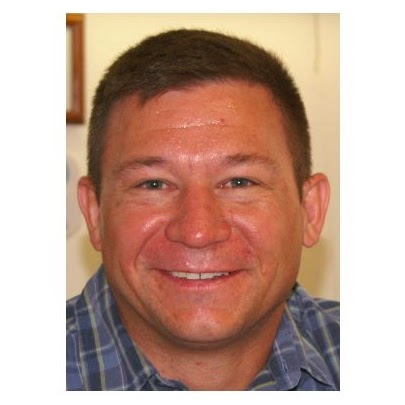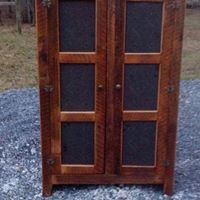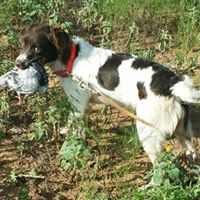Dennis Neil Roberson
age ~70
from Gardena, CA
- Also known as:
-
- Dennis N Roberson
- Dnnis N Roberson
- Phone and address:
-
14320 S Orchard Ave, Gardena, CA 90247
(310)9942703
Dennis Roberson Phones & Addresses
- 14320 S Orchard Ave, Gardena, CA 90247 • (310)9942703
- Inglewood, CA
- Redondo Beach, CA
- Los Angeles, CA
- 14320 S Orchard Ave, Gardena, CA 90247 • (310)5602798
Work
-
Company:Special education
-
Address:200 Kalmus Dr, Costa Mesa, CA 92626
-
Phones:(714)9664120
-
Position:Manager
-
Industries:Elementary and Secondary Schools
Education
-
Degree:Bachelor's degree or higher
Us Patents
-
Curing Impaired Content Utilizing A Knowledge Database Of Entigens
view source -
US Patent:20220318213, Oct 6, 2022
-
Filed:Jun 16, 2022
-
Appl. No.:17/842095
-
Inventors:- Schaumburg IL, US
David Ralph Lazzara - Huntington Beach CA, US
Stephen Emerson Sundberg - Chicago IL, US
Ameeta Vasant Reed - Deerfield IL, US
Dennis Arlen Roberson - Chapin SC, US
Thomas James MacTavish - Inverness IL, US
Karl Olaf Knutson - Palatine IL, US
Jessy Thomas - Palatine IL, US
Niklas Josiah MacTavish - Inverness IL, US
Andrew Chu - St. Charles IL, US
Theodore Mazurkiewicz - Lake Zurich IL, US
Gary W. Grube - Barrington Hills IL, US -
Assignee:entigenlogic LLC - Schaumburg IL
-
International Classification:G06F 16/215
G06F 16/28 -
Abstract:A method performed by a computing device includes obtaining impaired content for a topic that includes a series of words, and determining a set of identigens for each word of the series of words to produce sets of identigens. The method further includes interpreting, using identigen pairing rules of a knowledge database, the sets of identigens to determine a most likely meaning interpretation of the impaired content and produce an interim entigen group. The method further includes recovering an improved entigen group for the topic from the knowledge database utilizing the interim entigen group and based on a knowledge defect of the interim entigen group caused by an impairment of the impaired content.
-
Curating Knowledge Of A Knowledge Database
view source -
US Patent:20220230075, Jul 21, 2022
-
Filed:Mar 24, 2022
-
Appl. No.:17/702925
-
Inventors:- Schaumburg IL, US
David Ralph Lazzara - Huntington Beach CA, US
Donald Joseph Wurzel - Savannah GA, US
Paige Kristen Thompson - Huntington Beach CA, US
Stephen Emerson Sundberg - Chicago IL, US
Ameeta Vasant Reed - Deerfield IL, US
Stephen Chen - Wheaton IL, US
Dennis Arlen Roberson - Chapin SC, US
Thomas James MacTavish - Inverness IL, US
Karl Olaf Knutson - Palatine IL, US
Jessy Thomas - Palatine IL, US
Andrew Chu - St. Charles IL, US
Theodore Mazurkiewicz - Lake Zurich IL, US
Gary W. Grube - Barrington Hills IL, US -
Assignee:entigenlogic LLC - Schaumburg IL
-
International Classification:G06N 5/02
G06N 5/04
G06F 40/30 -
Abstract:A method includes detecting an incomplete entigen group within a knowledge database. The incomplete entigen group includes entigens and one or more entigen relationships between at least some of the entigens. The incomplete entigen group represents knowledge of a topic. The method further includes obtaining additive content for the topic based on the incomplete entigen group and generating an additive entigen group based on the additive content. The method further includes updating the incomplete entigen group utilizing the additive entigen group to produce an updated entigen group. The method further includes indicating that the updated entigen group has an un-curated status when the additive entigen group conflicts with the incomplete entigen group.
-
Image Processing Utilizing An Entigen Construct
view source -
US Patent:20230043805, Feb 9, 2023
-
Filed:Oct 20, 2022
-
Appl. No.:17/970112
-
Inventors:- Schaumburg IL, US
David Ralph Lazzara - Huntington Beach CA, US
Stephen Emerson Sundberg - Chicago IL, US
Ameeta Vasant Reed - Deerfield IL, US
Dennis Arlen Roberson - Chapin SC, US
Thomas James MacTavish - Inverness IL, US
Karl Olaf Knutson - Palatine IL, US
Jessy Thomas - Palatine IL, US
Niklas Josiah MacTavish - Inverness IL, US
Andrew Chu - St. Charles IL, US
Theodore Mazurkiewicz - Lake Zurich IL, US
Gary W. Grube - Barrington Hills IL, US -
Assignee:entigenlogic LLC - Schaumburg IL
-
International Classification:G06F 16/332
G06N 5/04
G06F 40/247 -
Abstract:A method performed by a computing device includes determining a set of identigens for each word of a query of a topic to produce sets of identigens. Each set of identigens represents one or more different meanings of a word of the query. The method further includes interpreting, using identigen pairing rules, the sets of identigens to determine a most likely meaning interpretation of the query and produce an excluding query entigen group with an excluding entigen. The method further includes recovering a response entigen group for the query from a knowledge database utilizing the excluding query entigen group. The response entigen group provides a response to the query.
-
Perfecting A Query To Provide A Query Response
view source -
US Patent:20210374167, Dec 2, 2021
-
Filed:May 24, 2021
-
Appl. No.:17/327883
-
Inventors:- Schaumburg IL, US
David Ralph Lazzara - Huntington Beach CA, US
Donald Joseph Wurzel - Savannah GA, US
Stephen Emerson Sundberg - Chicago IL, US
Ameeta Vasant Reed - Deerfield IL, US
Dennis Arlen Roberson - Chapin SC, US
Thomas James MacTavish - Inverness IL, US
Karl Olaf Knutson - Palatine IL, US
Jessy Thomas - Palatine IL, US
Niklas Josiah MacTavish - Inverness IL, US
Andrew Chu - St. Charles IL, US
Theodore Mazurkiewicz - Lake Zurich IL, US
Gary W. Grube - Barrington Hills IL, US -
Assignee:entigenlogic LLC - Schaumburg IL
-
International Classification:G06F 16/332
G06F 40/284
G06N 5/02
G06N 5/04
G06F 40/30 -
Abstract:A method executed by a computing device includes determining a set of identigens for each query word of a query to produce sets of identigens. The method further includes interpreting the sets of identigens to produce different first and second query entigen groups. The method further includes generating an interim response based on the first and second query entigen groups. The method further includes determining a set of identigens for each updated query word of an updated query to produce updated sets of identigens. The method further includes selecting one of the first or second query entigen group based on the updated sets of identigens to produce a selected query entigen group. The method further includes generating a response entigen group utilizing the selected query entigen group and generating a response to the query utilizing the response entigen group.
-
Interpreting Meaning Of Content
view source -
US Patent:20200342171, Oct 29, 2020
-
Filed:Apr 22, 2020
-
Appl. No.:16/855445
-
Inventors:- Schaumburg IL, US
David Ralph Lazzara - Huntington Beach CA, US
Donald Joseph Wurzel - Savannah GA, US
Stephen Emerson Sundberg - Chicago IL, US
Ameeta Vasant Reed - Deerfield IL, US
Dennis Arlen Roberson - Chapin SC, US
Thomas James MacTavish - Inverness IL, US
Karl Olaf Knutson - Palatine IL, US
Jessy Thomas - Palatine IL, US
Niklas Josiah MacTavish - Inverness IL, US
Andrew Chu - St. Charles IL, US
Theodore Mazurkiewicz - Lake Zurich IL, US
Gary W. Grube - Barrington Hills IL, US -
Assignee:entigenlogic LLC - Schaumburg IL
-
International Classification:G06F 40/284
G06F 16/9032
G06F 16/903
G06F 40/253 -
Abstract:A method for execution by a computing device includes obtaining a phrase that includes string of words and generating a valid sequence of words utilizing the phrase. The method further includes identifying a set of identigens for each word of the valid sequence of words to produce sets of identigens. The method further includes identifying, for each identigen of the sets of identigens, a word type associated with phrase structure grammar rules to produce sets of identigen-type associations. The method further includes interpreting, utilizing the phrase structure grammar rules, the sets of identigen-type associations to produce an entigen group. The entigen group represents a most likely interpretation of the phrase.
-
Generating Comparison Information
view source -
US Patent:20200279175, Sep 3, 2020
-
Filed:Feb 25, 2020
-
Appl. No.:16/800827
-
Inventors:- Schaumburg IL, US
David Ralph Lazzara - Huntington Beach CA, US
Stephen Emerson Sundberg - Chicago IL, US
Ameeta Vasant Reed - Deerfield IL, US
Dennis Arlen Roberson - Chapin SC, US
Thomas James MacTavish - Inverness IL, US
Karl Olaf Knutson - Palatine IL, US
Jessy Thomas - Palatine IL, US
Niklas Josiah MacTavish - Inverness IL, US
Andrew Chu - St. Charles IL, US
Theodore Mazurkiewicz - Lake Zurich IL, US
Gary W. Grube - Barrington Hills IL, US -
Assignee:entigenlogic LLC - Schaumburg IL
-
International Classification:G06N 5/02
G06F 16/903 -
Abstract:A method performed by a computing device includes generating a comparative query entigen group set based on a comparative query in accordance with identigen rules, where the comparative query entigen group set represents a most likely interpretation of the comparative query. The method further includes obtaining a first response entigen group from a knowledge database based on a first comparative query entigen group of the comparative query entigen group set, where the first response entigen group substantially includes the first comparative query entigen group. The method further includes obtaining a second response entigen group from the knowledge database based on a second comparative query entigen group of the comparative query entigen group set, where the second response entigen group substantially includes the second comparative query entigen group. The method further includes generating a comparative response based on the first response entigen group and the second response entigen group.
-
Converting Content From A First To A Second Aptitude Level
view source -
US Patent:20200242137, Jul 30, 2020
-
Filed:Jan 8, 2020
-
Appl. No.:16/737123
-
Inventors:- Schaumburg IL, US
David Ralph Lazzara - Huntington Beach CA, US
Stephen Emerson Sundberg - Chicago IL, US
Ameeta Vasant Reed - Deerfield IL, US
Dennis Arlen Roberson - Chapin SC, US
Thomas James MacTavish - Inverness IL, US
Karl Olaf Knutson - Palatine IL, US
Jessy Thomas - Palatine IL, US
Niklas Josiah MacTavish - Inverness IL, US
Andrew Chu - St. Charles IL, US
Theodore Mazurkiewicz - Lake Zurich IL, US
Gary W. Grube - Barrington Hills IL, US -
Assignee:entigenlogic LLC - Schaumburg IL
-
International Classification:G06F 16/31
G06F 40/284
G06F 40/242
G06F 40/53
G06F 16/33
G06F 40/30 -
Abstract:A method performed by a computing device includes generating a first aptitude level entigen group for a first aptitude level phrase in accordance with identigen rules. The first aptitude level entigen group represents a most likely interpretation of the first aptitude level phrase. The method further includes obtaining a multiple aptitude level entigen group from a knowledge database based on the first aptitude level entigen group. The multiple aptitude level entigen group includes the first aptitude level entigen group. The method further includes generating a second aptitude level entigen group utilizing the multiple aptitude level entigen group. The method further includes generating a second aptitude level phrase based on the second aptitude level entigen group. The second aptitude level entigen group represents a most likely interpretation of the second aptitude level phrase.
-
Generating A Query Response Utilizing A Knowledge Database
view source -
US Patent:20200210643, Jul 2, 2020
-
Filed:Dec 11, 2019
-
Appl. No.:16/710847
-
Inventors:- Schaumburg IL, US
David Ralph Lazzara - Huntington Beach CA, US
Stephen Emerson Sundberg - Chicago IL, US
Ameeta Vasant Reed - Deerfield IL, US
Dennis Arlen Roberson - Chapin SC, US
Thomas James MacTavish - Inverness IL, US
Karl Olaf Knutson - Palatine IL, US
Jessy Thomas - Palatine IL, US
Niklas Josiah MacTavish - Inverness IL, US
Andrew Chu - St. Charles IL, US
Theodore Mazurkiewicz - Lake Zurich IL, US
Gary W. Grube - Barrington Hills IL, US -
Assignee:entigenlogic LLC - Schaumburg IL
-
International Classification:G06F 40/205
G06F 40/30
G06N 5/02 -
Abstract:A method performed by a computing device includes identifying a first set of sentiment identigens of a plurality of sets of identigens for a query that includes a string of words, where the first set of sentiment identigens represents different meanings of a first sentiment word of the string of words. The method further includes selecting an entigen group from a knowledge database based on the plurality of sets of identigens, where a first sentiment entigen of the entigen group corresponds to the first set of sentiment identigens. The method further includes generating a response entigen group based on the entigen group, where a response entigen of the response entigen group corresponds to a selected identigen from a set of identigens of the plurality of sets of identigens regarding a word of the string of words.
Resumes

Dennis Roberson
view source
Dennis Roberson
view source
Dennis Roberson
view source
Dennis Roberson
view source
Dennis Roberson
view source
Dennis Roberson
view source
Dennis Roberson
view source
Dennis Roberson
view sourceLocation:
United States
Name / Title
Company / Classification
Phones & Addresses
Manager
Special Education
Elementary and Secondary Schools
Elementary and Secondary Schools
200 Kalmus Dr, Costa Mesa, CA 92626
Website: ocde.us
Website: ocde.us
Manager
Special Education
Elementary & Secondary Schools
Elementary & Secondary Schools
200 Kalmus Dr, Costa Mesa, CA 92626
(714)9664120, (714)5456312
(714)9664120, (714)5456312
Administrator Education
Dept of Education, Orange County
Administrative Educational Programs · General Government · Elementary/Secondary School
Administrative Educational Programs · General Government · Elementary/Secondary School
200 Kalmus Dr, Costa Mesa, CA 92626
(714)9664349, (714)9664000, (714)9664021
(714)9664349, (714)9664000, (714)9664021
President
California State Federation-Council for Exceptional Children
PO Box 8057, Dairyville, CA 96080
PO Box 5223, Pomona, CA 91765
PO Box 5223, Pomona, CA 91765
Isbn (Books And Publications)

Winning 42: Strategy & Lore of the National Game of Texas
view sourceAuthor
Dennis Roberson
ISBN #
0896723844

Winning 42: Strategy & Lore of the National Game of Texas
view sourceAuthor
Dennis Roberson
ISBN #
0896724433

Winning 42: Strategy & Lore of the National Game of Texas
view sourceAuthor
Dennis Roberson
ISBN #
0896725413
Classmates

Dennis Roberson
view sourceSchools:
Tallulah High School Tallulah LA 1966-1970
Community:
Marilyn Armstrong, Roy Ashley, Connie Dykes, Rosie Thomas, Mary Miles, Linda Huckabay, Rosie Robinson, Larry Ezell, Carolyn Worley, Kirby Mccarty

dennis roberson, Berea Hi...
view source
Dennis Roberson, Vernon H...
view source
Dennis Roberson | Cave Sp...
view source
Webster Junior High Schoo...
view sourceGraduates:
Dennis Roberson (1973-1975),
norman cannon (1972-1976)
norman cannon (1972-1976)

West Clay High School, Ph...
view sourceGraduates:
angela roberson (1980-1984),
Dennis Roberson (1994-1998),
Shelia Brownlee (1983-1987),
Billy Chandler (1985-1989),
Janette Owens (1981-1985)
Dennis Roberson (1994-1998),
Shelia Brownlee (1983-1987),
Billy Chandler (1985-1989),
Janette Owens (1981-1985)

Berea High School, Greenv...
view sourceGraduates:
dennis roberson (1980-1984),
Dennis Charles (1967-1969),
Stephanie Cohens (1985-1989)
Dennis Charles (1967-1969),
Stephanie Cohens (1985-1989)

Vernon High School, Verno...
view sourceGraduates:
Karen Peterson (1961-1965),
Barbara Newberry (1994-1998),
Sue Bohall (1975-1979),
Dennis Roberson (1968-1972),
Ricky Herrera (1988-1992)
Barbara Newberry (1994-1998),
Sue Bohall (1975-1979),
Dennis Roberson (1968-1972),
Ricky Herrera (1988-1992)
Youtube
Flickr
Myspace
Googleplus

Dennis Roberson

Dennis Roberson

Dennis Roberson

Dennis Roberson

Dennis Roberson
view source
Dennis Heath Roberson
view source
Dennis Roberson
view source
Dennis Roberson
view source
Dennis Roberson
view source
Dennis Roberson
view source
Dennis Roberson
view source
Dennis Roberson
view sourceGet Report for Dennis Neil Roberson from Gardena, CA, age ~70
















